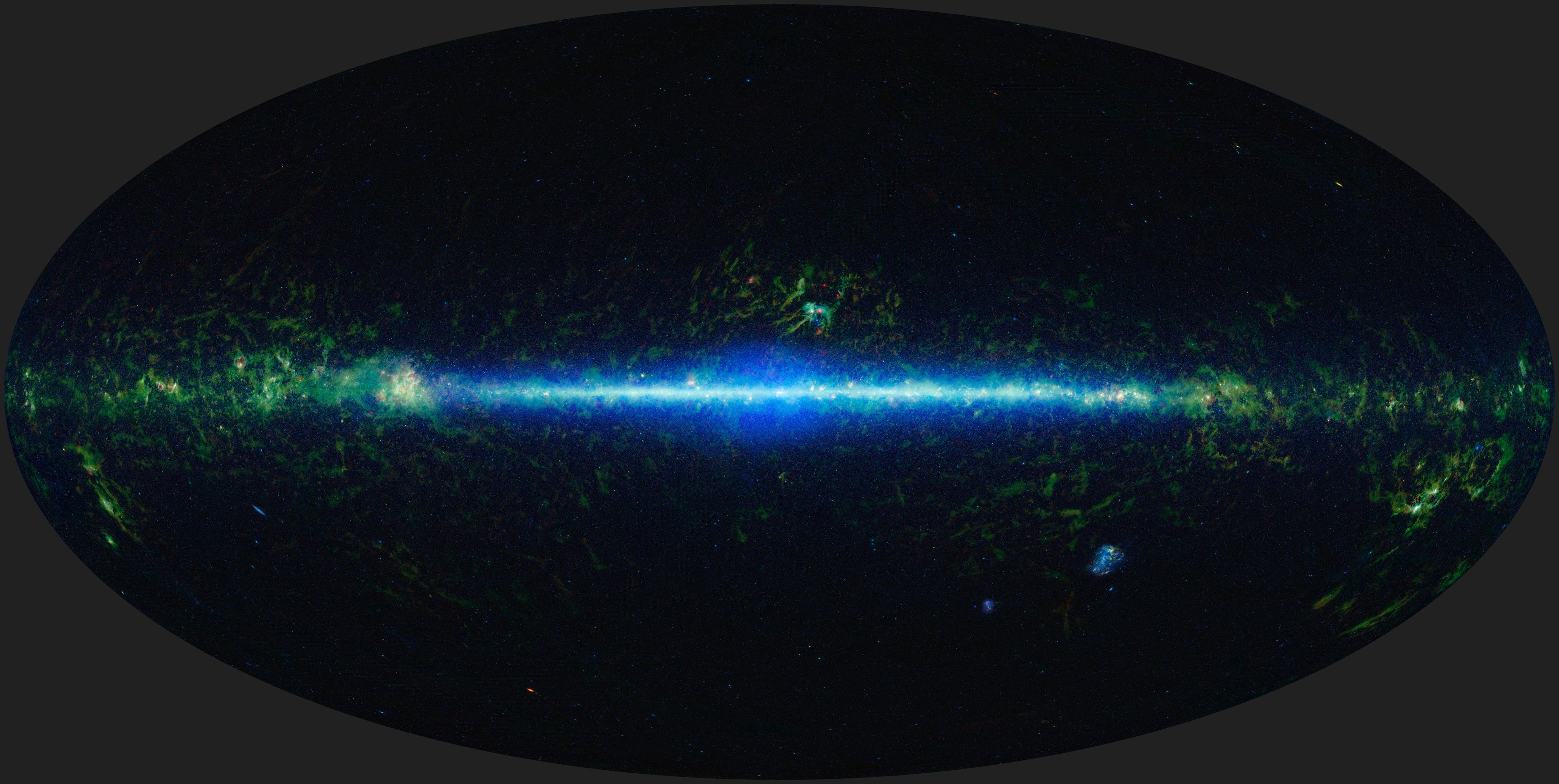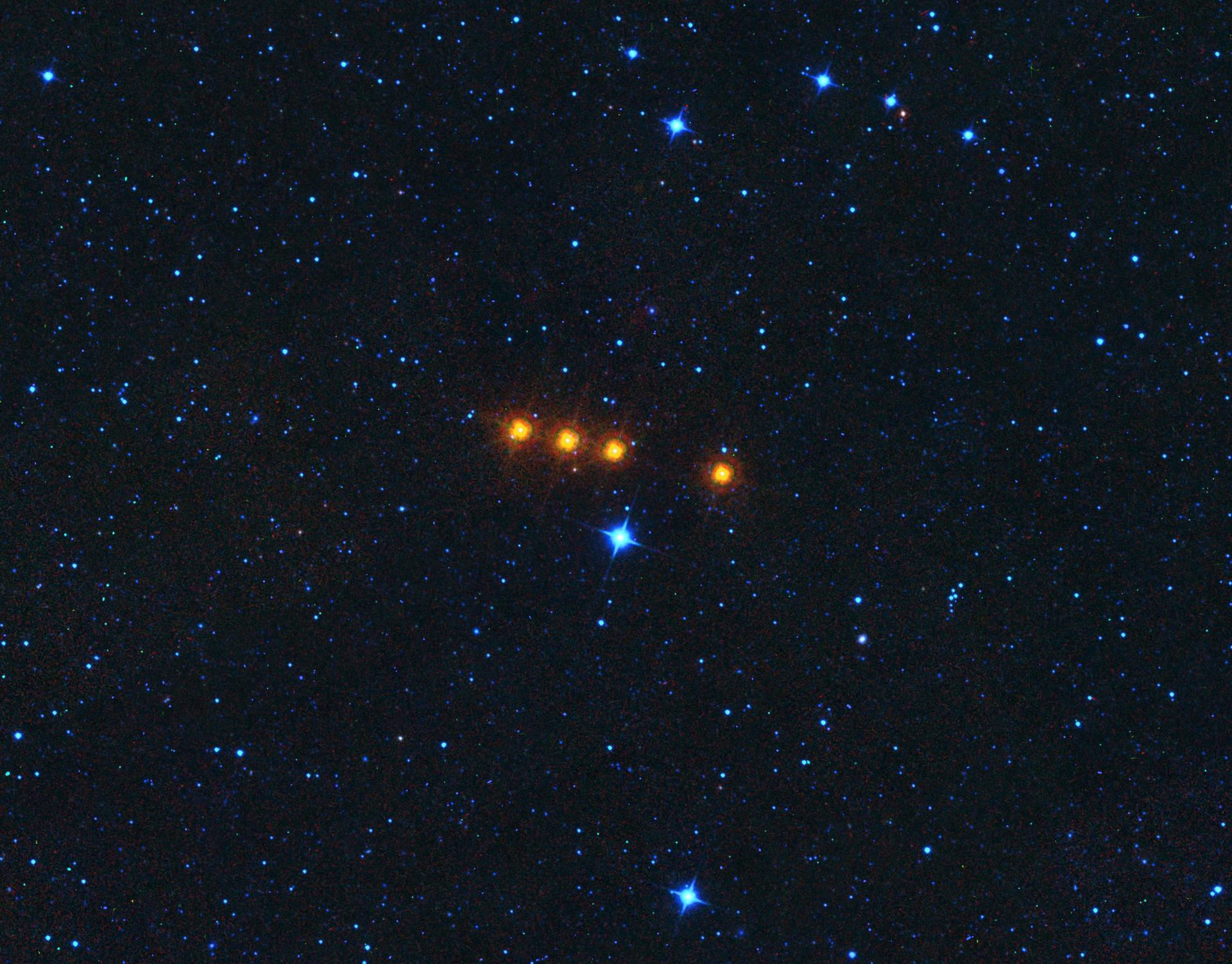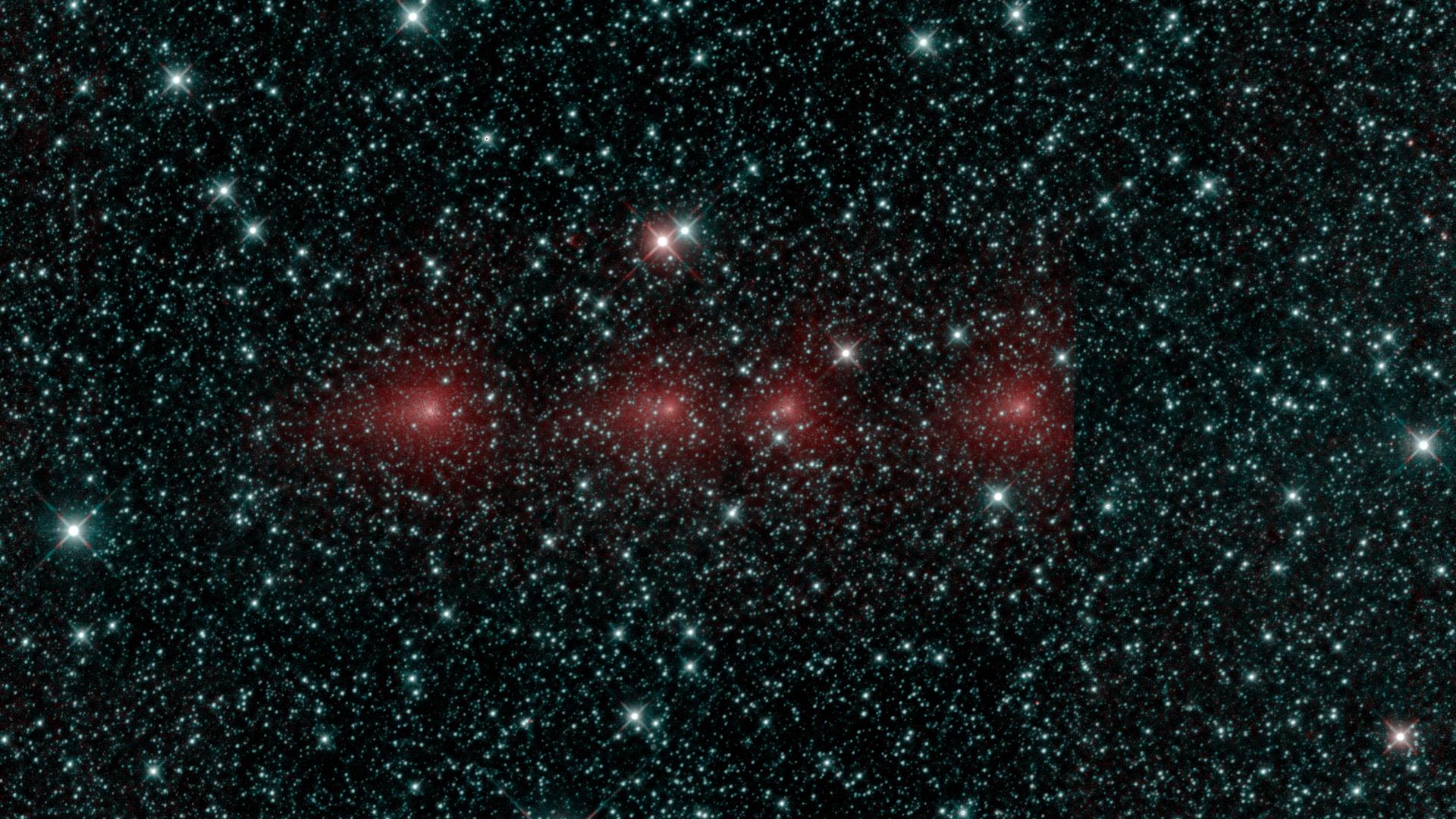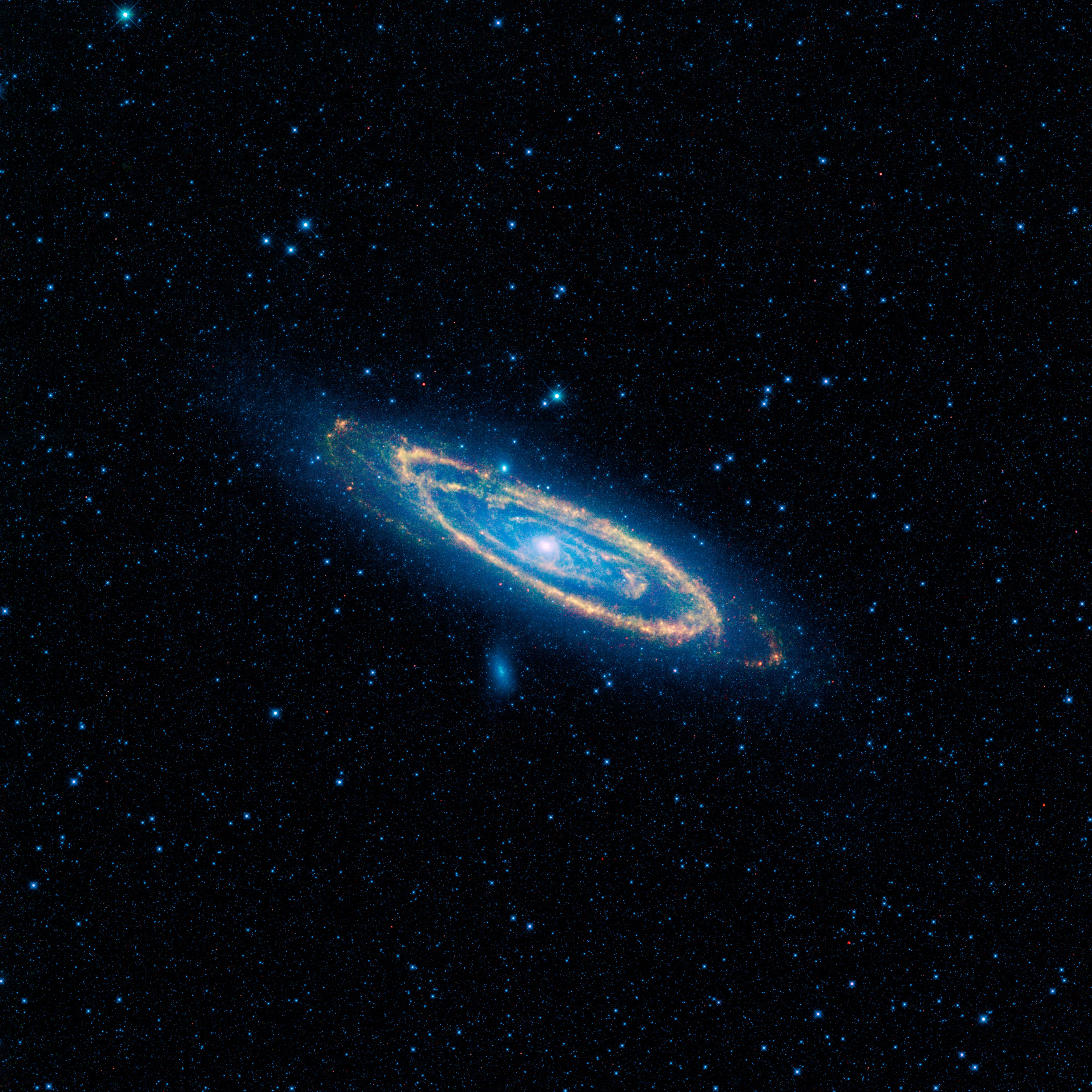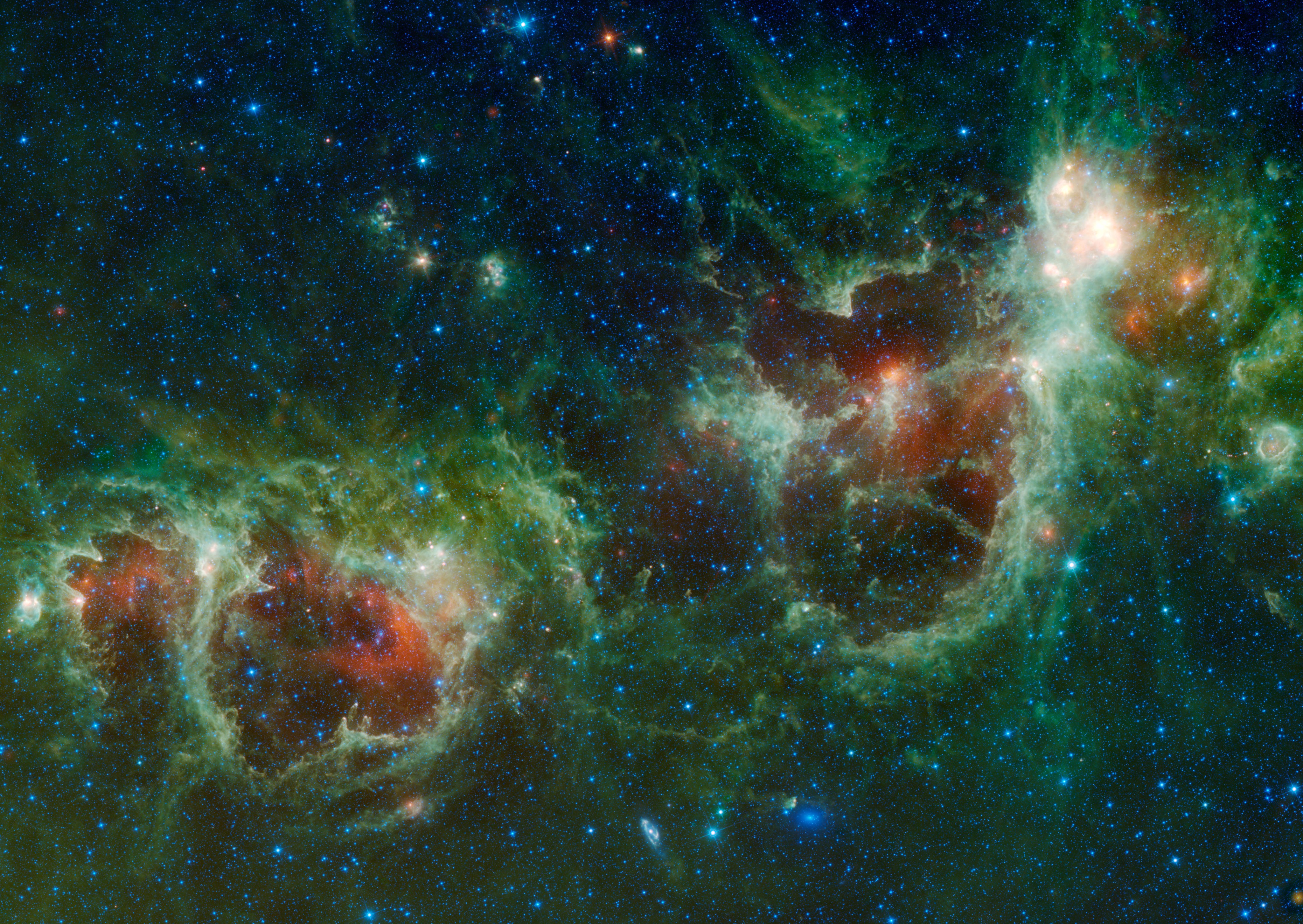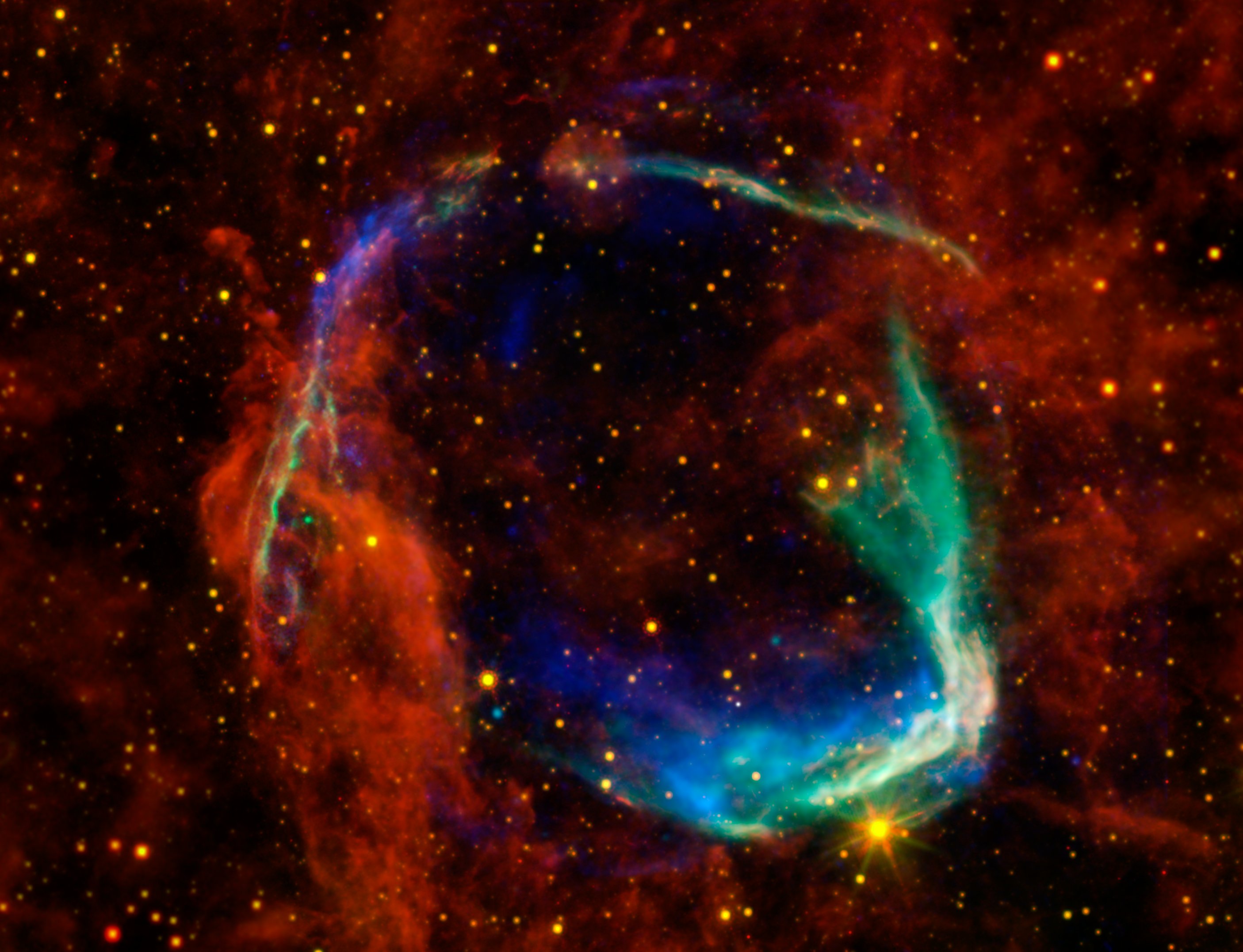Images from WISE and NEOWISE
As a distant stargazer and a neighborhood watchdog, NASA's WISE/NEOWISE spacecraft has scanned the sky around us – both far and near – since 2009, even after a mid-life career change. The space telescope launched in December 2009 as WISE (the Wide-field Infrared Survey Explorer), and surveyed the full sky in four infrared wavelength bands, spotting distant objects by the heat they emitted. The WISE mission found tens of millions of actively feeding supermassive black holes, exploding white dwarf stars, dim and elusive star-like bodies called brown dwarfs, and the brightest galaxy ever seen before, radiating light at 350 trillion times the luminosity of our Sun, as it devoured three smaller neighboring galaxies. But WISE exhausted the frozen hydrogen necessary to cool the telescope in September 2010, and NASA put the spacecraft into hibernation in February 2011. The agency revived it in December 2013; the telescope could still function to hunt near-Earth objects – comets and asteroids that might threaten Earth. Just six days into this new assignment, the now-renamed NEOWISE discovered its first potentially hazardous near-Earth asteroid. As of mid-July 2024, the watchdog space telescope had investigated 44,266 different solar system objects, among them 1,598 near-Earth objects and 291 comets – including its dazzling namesake, Comet NEOWISE, in 2020.

